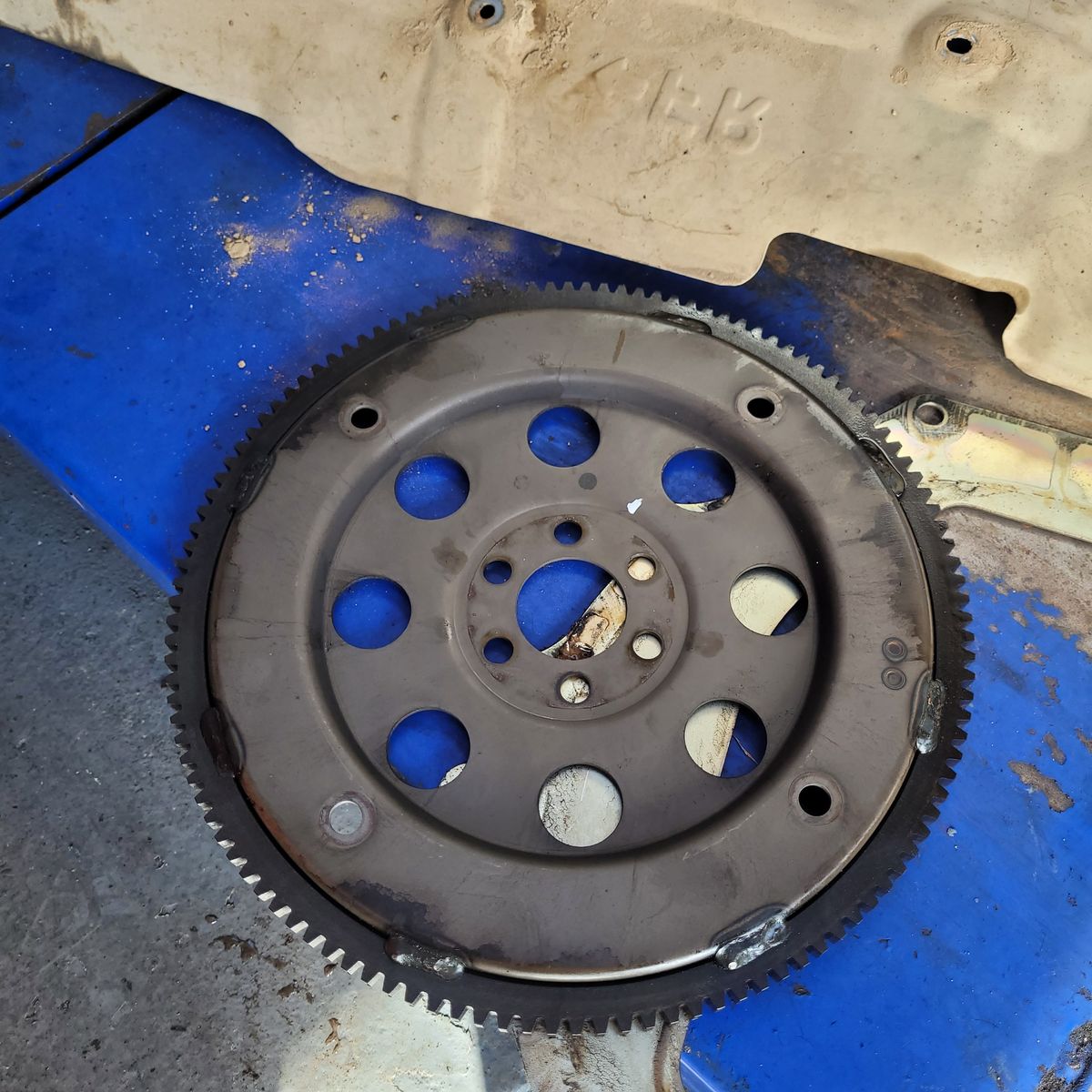What does the flywheel do?
The flywheel is a disc that is bolted to your vehicle’s crankshaft and it has several important jobs when it comes to the operation of your car. Its main job is to improve the power delivery of your engine by providing a continuous source of rotational energy. Since the flywheel needs a large amount of torque to get it rotating and also needs a large amount torque to slow it down, it is very effective in conserving momentum.
The flywheel works alongside the clutch to control the transfer of power between the transmission and engine. When the clutch is disengaged, this flow of power is interrupted. This allows for gears to be changed.
The flywheel has several small teeth around it. The purpose of the teeth is to allow the starter to engage it, causing the engine to turn over.
Learn more about how a flywheel works
What are the benefits of skimming the flywheel?
Preventative maintenance
Depending on its condition, the flywheel may be resurfaced as a form of preventative maintenance when the clutch is replaced. As the clutch disc wears, its lining will lose the ability to grip the flywheel. The disc then begins to slip, creating a large amount of heat. This heat can cause the flywheel to harden over time and potentially crack.
Skimming or resurfacing the flywheel removes layers of hardened metal from the flywheel. This prevents it from continuing to harden and cracking. By combining the skimming of the flywheel with a clutch replacement, you are saving yourself time, money and labour by doing everything at once.
Preventing clutch damage:
A worn or damaged flywheel can affect the operation of your clutch, resulting in it slipping more often. Over time, this can cause expensive clutch damage. Resurfacing the flywheel at the same time as clutch repairs allows the clutch to function smoothly and increases its lifespan.
Smoother gear changes:
When the flywheel has a flat, score-free surface, the clutch will be able to engage and disengage much more smoothly. This will allow you to easily change gears, making your driving experience easier and smoother.
If you notice that your clutch is slipping, or your car does not change gears as smoothly, consider inspecting the flywheel as well as the clutch.
Symptoms of a worn flywheel:
Below are some symptoms which suggest that your flywheel may need resurfacing or replacing:
- Clutch slipping – When a flywheel is in need of a resurface or replacement, it will cause can your clutch to slip due to being scored or glazed.
- Burning smell – When the flywheel becomes badly scored, less surface area of the clutch plate come in contact and you may notice a strong burning smell. This happens due to the excess heat generated by the clutch.
- Vibrations – with an overheated and warped surface of the flywheel you may also experience vibrations coming from the clutch. These vibrations may eventually get so bad that you will be able to feel them through the body of your car.
Flywheel replacement in Hamilton
Flywheel Skimming & Resurfacing in Hamilton
Is your vehicle in need of a flywheel repair, replacement or skim/resurface? If so, we can help! At Grimmer Motors, our mechanics can inspect / remove and organise for your car’s flywheel to be skimmed. This will allow for smoother clutch engagement. It will also act as a preventative maintenance measure during a clutch replacement.
If you need a flywheel resurfacing in Hamilton, contact Grimmer Motors and we will organise the service for you.


